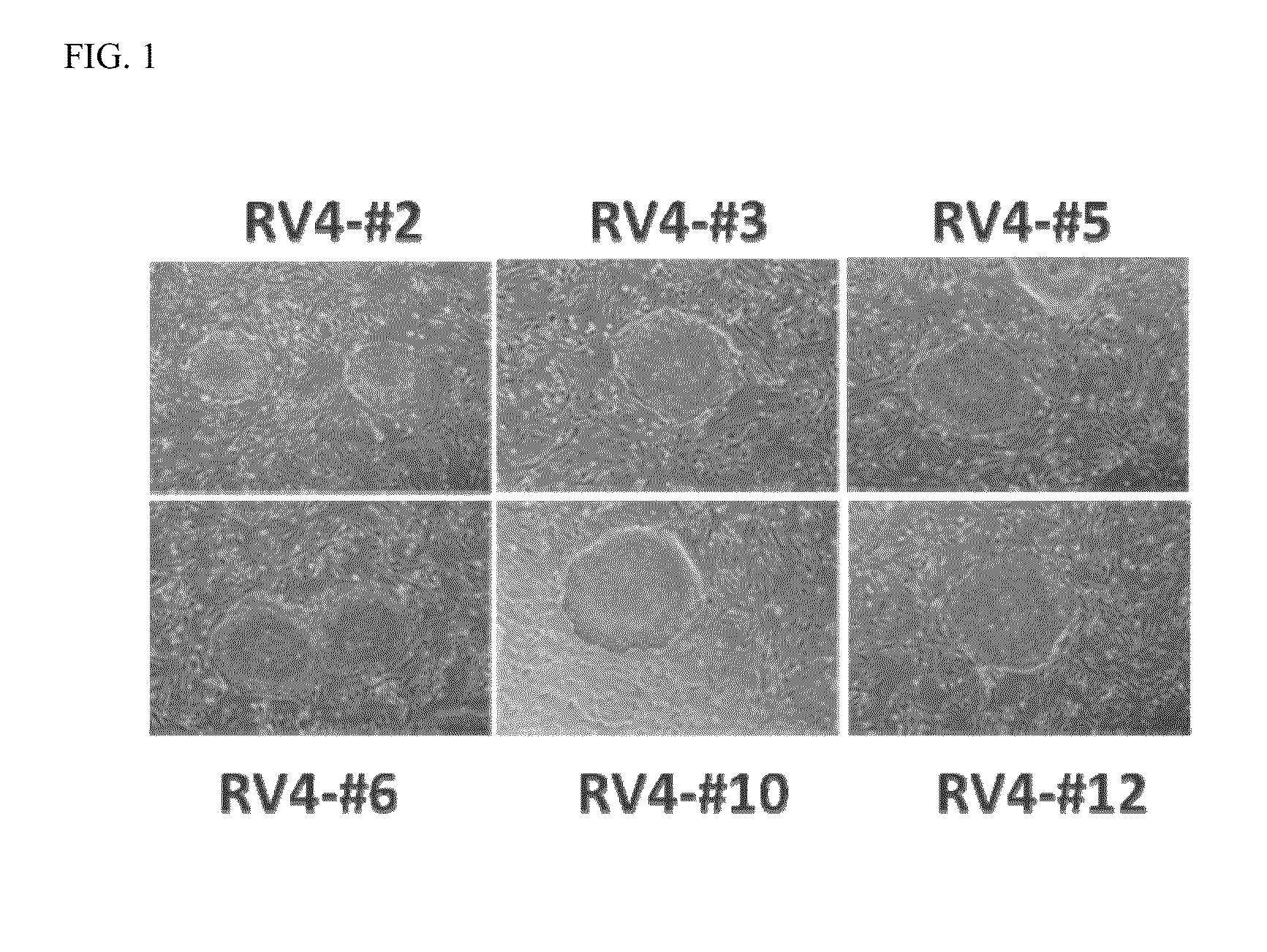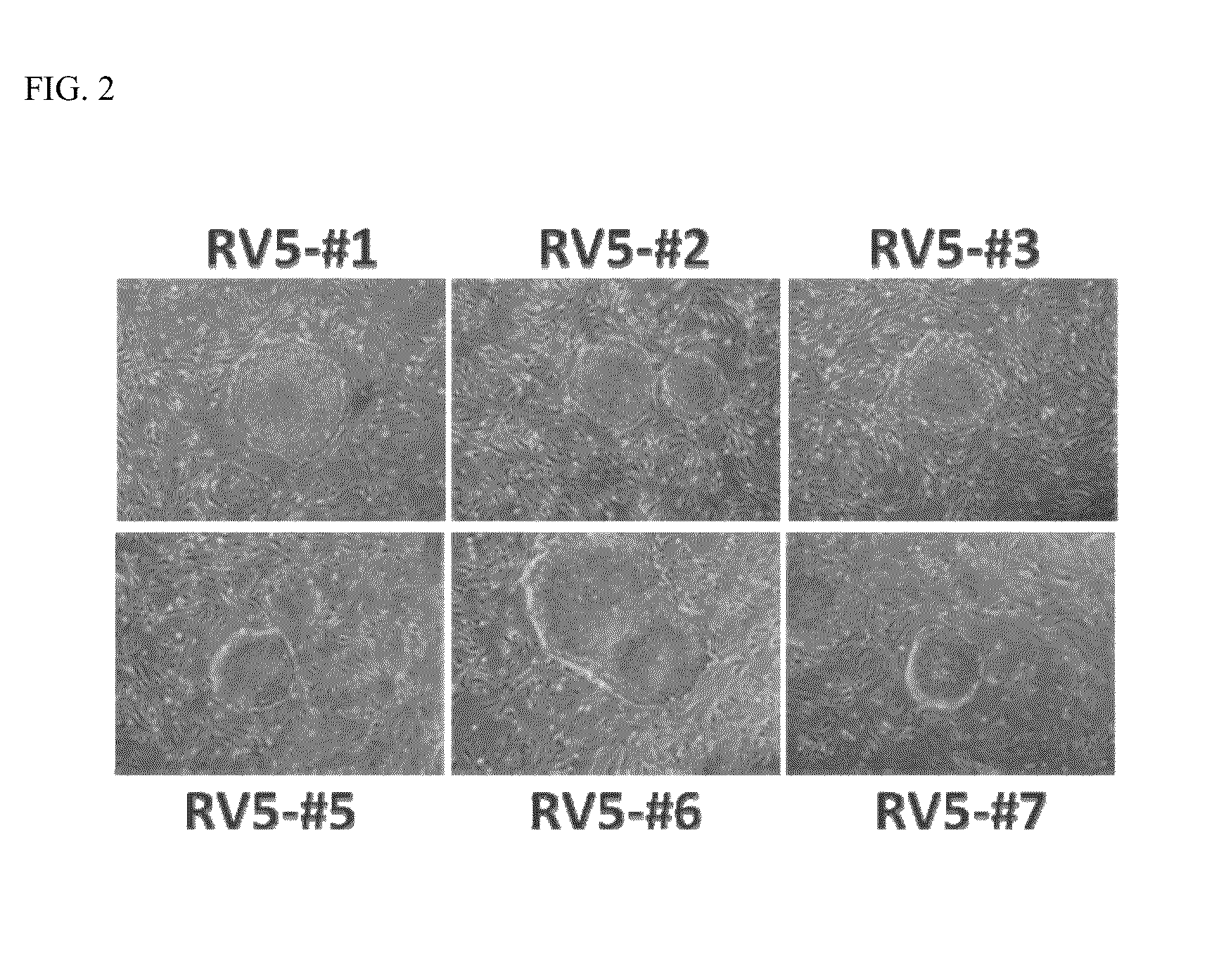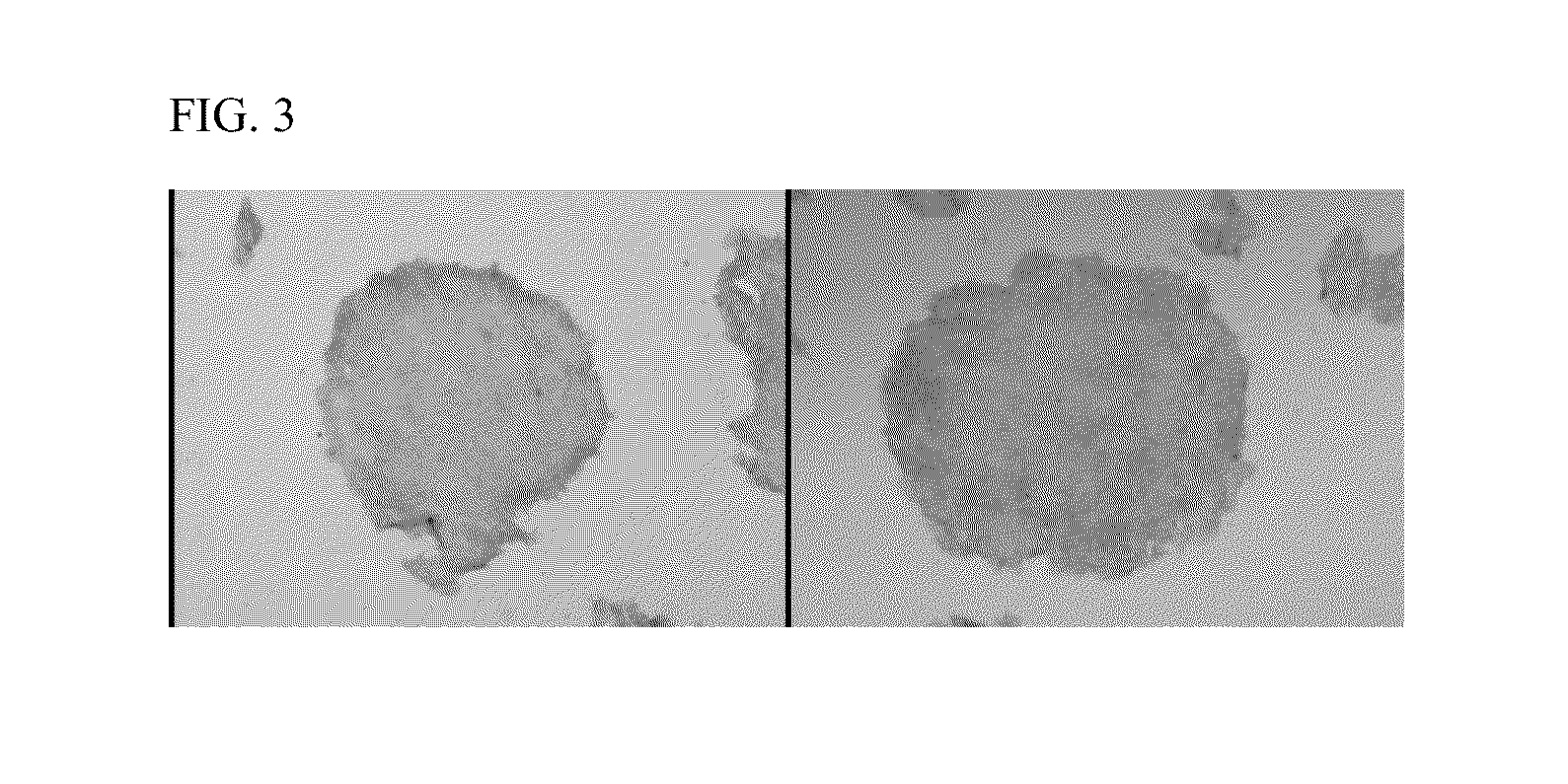Induced pluripotent stem cells prepared from human kidney-derived cells
a technology of human kidneys and stem cells, applied in the field of induced pluripotent stem cells, can solve the problems of limited use of ips cells for therapeutic applications, slow process, inefficiency, etc., and achieve the effects of improving the survival rate of ips cells, and reducing the number of ips
- Summary
- Abstract
- Description
- Claims
- Application Information
AI Technical Summary
Benefits of technology
Problems solved by technology
Method used
Image
Examples
example 1
Viral Reprogramming of hKDC into iPS Cells
[0023]hKDC obtained according to the methods described in US Patent Publication Number 2008 / 0112939 were transduced with retroviral constructs from Stemgent, Inc. (San Diego, Calif.), specifically VSVg murine retroviruses individually carrying constitutively expressed human transcription factors (OCT4, SOX2, KLF4, and c-MYC) with or without VSVg murine retrovirus containing p53-shRNA.
[0024]The murine retroviruses were produced using the 293-gp2 retrovirus packaging cells that were plated one day prior to transfection onto 6 centimeter dishes at a density of 3×106 cells per dish and incubated overnight at 5% CO2 and 37° C. Each dish was then transfected with 3 micrograms of a single pMX vector (Sox2, Oct4, cMyc or Klf4, or p53-shRNA), 1 microgram VSV-g and 16 microliters of transfection agent sold under the tradename FUGENE HD (Roche Applied Bioscience, Indianapolis, Ind., catalog number 04709705001) according to the manufacturer's standard p...
example 2
Expression of Pluripotency Markers
[0029]The human kidney-derived iPS cells prepared in Example 1 were assessed for the expression of pluripotency markers by immunocytochemistry. Following fixation of the colonies in 4% paraformaldehyde, immunofluorescent staining for pluripotency markers was performed using the antibody reagents shown in Table 1 (all antibodies were obtained from Stemgent, Inc.).
TABLE 1MarkerPrimary AntibodySecondary AntibodyTRA-1-81Mouse anti-Human TRA-1-81NAAntibody, sold under thetradename DYLIGHT 549,catalog number 09-0082TRA-1-60Mouse anti-Human TRA-1-60NAAntibody, sold under thetradename STAINALIVEDYLIGHT 488, catalognumber 09-0068SSEA-3Anti-Human SSEA-3Goat anti-Rat IgG + IgMAntibody, catalog numberAntibody, sold under the09-0014tradename CY 3, catalognumber 09-0038SSEA-4Anti-Human SSEA-4Goat anti-Mouse IgG + IgMAntibody, catalog numberAntibody, sold under the09-0006tradename CY 3, catalognumber 09-0036NANOGAnti-Mouse / Human NANOGGoat anti-Rabbit IgGAntibody, ...
example 3
Methylation Analysis of Oct4, Nanog, and Sox2 Promoters
[0031]The human kidney-derived iPS cells prepared in Example 1, clones RV4-5 and RV5-1, were analyzed for the methylation status of the Oct4, Nanog, and Sox2 promoter regions using the bisulfite sequencing method and analysis was performed by Seqwright, Inc. (Houston, Tex.). The bisulfite method is the most commonly used technique for identifying specific methylation patterns within a DNA sample. It consists of treating DNA with bisulfite, which converts unmethylated cytosines to uracil but does not change methylated cytosines. It is used both for loci-specific or genome-wide analyses.
[0032]Approximately 100 to 500 bp-long promoter regions of Oct4, Nanog, and Sox2 were examined for methylation patterns. DNA (see Table 2) were prepared using the DNA extraction kit sold under the tradename DNEASY (Qiagen, Inc., Valencia, Calif., catalog number 69506) and were sent to Seqwright, Inc. for analysis.
TABLE 2Sample IDSample description1...
PUM
 Login to View More
Login to View More Abstract
Description
Claims
Application Information
 Login to View More
Login to View More - R&D
- Intellectual Property
- Life Sciences
- Materials
- Tech Scout
- Unparalleled Data Quality
- Higher Quality Content
- 60% Fewer Hallucinations
Browse by: Latest US Patents, China's latest patents, Technical Efficacy Thesaurus, Application Domain, Technology Topic, Popular Technical Reports.
© 2025 PatSnap. All rights reserved.Legal|Privacy policy|Modern Slavery Act Transparency Statement|Sitemap|About US| Contact US: help@patsnap.com



